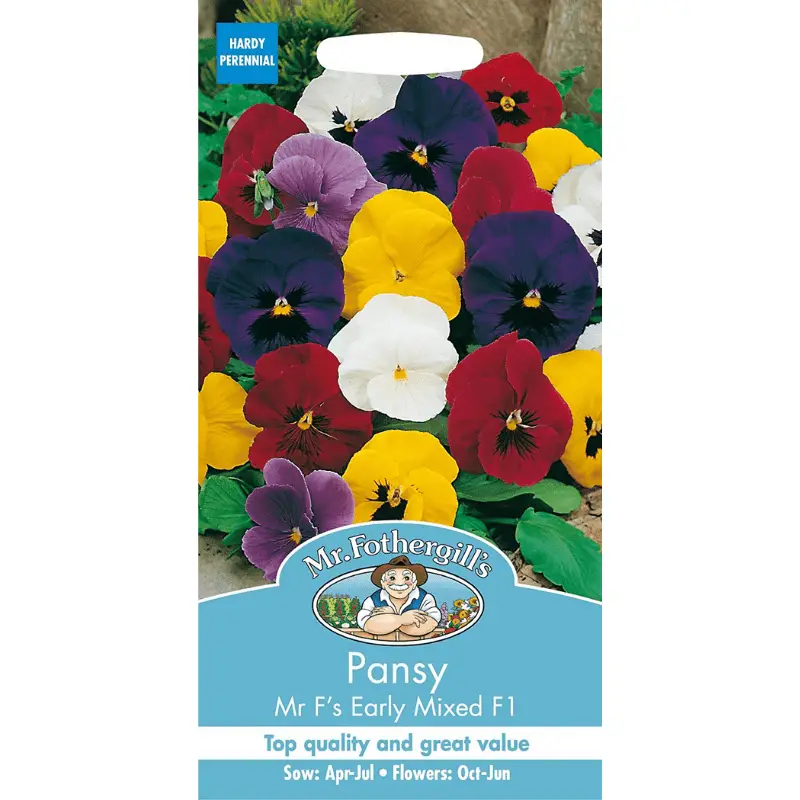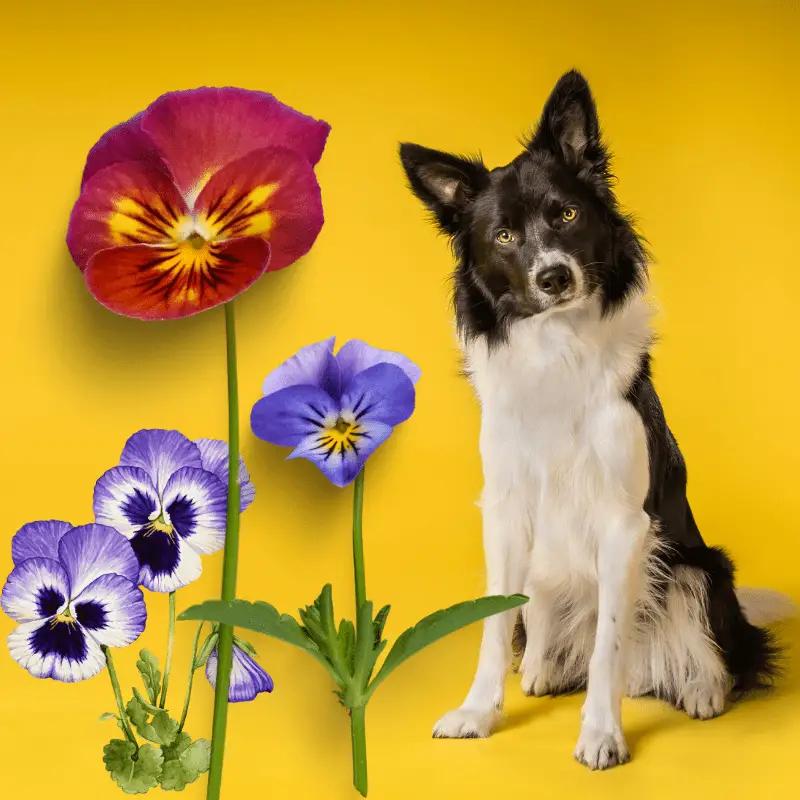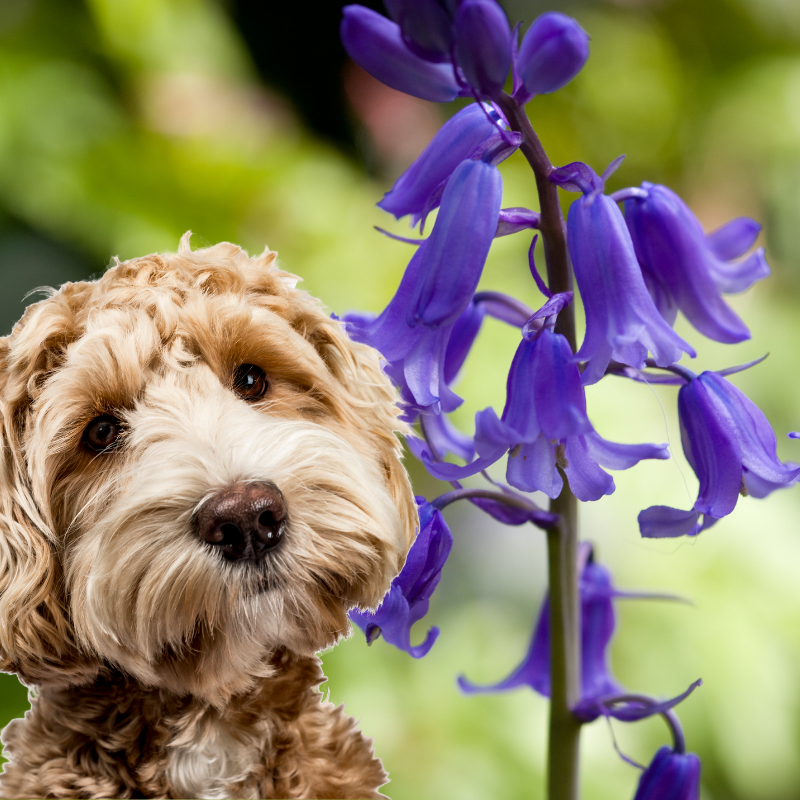The flowers we grow in our garden should be harmless to dogs. If you have just got a dog or are thinking of improving your garden and want it, they can only, then making sure that the flowers you grow are non-toxic is critical.
Dogs are notorious for eating anything non-edible, yet you don’t want to see your dog get sick from something like the flowers in a garden. That’s why it’s essential to make sure they’re safe and non-toxic before planting them.
Dogs eating pansies is a common problem in the spring. The flowers are mildly poisonous to dogs but not enough to cause serious illness. They can cause vomiting and diarrhoea if eaten in large quantities or over a long period.
Why do dogs eat pansies?
Dogs will typically eat pansies out of boredom or because they’re dogs and don’t know any better. If your dog eats one flower or two, it’s unlikely that you’ll need to worry about it unless they continue to do so for an extended period.
- Get rid of intestinal parasites
- Dietary deficiency
- Enjoys the taste
- Boredom
Are pansies suitable for my dog?
We know that pansies are not poisonous to dogs. However, you can always have them in hanging baskets if you are concerned. However, anything dog’s eaten excessively can affect the stomach, so you need to judge your dog’s personality and understand if your dog will become an excessive pansy muncher or not.
About the Pansy
The pansy is a type of large-flowered hybrid plant cultivated as a garden flower. It was developed by the hybridisation process from several Viola species, originating from different parts in and around Europe, Asia Minor, Africa, and North America.
Types of pansies
There are two types of pansies, sweet and double. What makes them unique is that they have butter-soft petals, making them a perfect plant for bedding or hanging. The colours range is from soft pastels for a more feminine touch to various shades of reds, purples, blues, and yellows that can be mixed to create an eye-catching effect.
What do double pansies mean?
Double-flowered varieties have two rows of petals that overlap one another like scales. These buttery soft leaves make it an excellent addition for any space because you can’t go wrong when picking out double plants.
Do pansies come back every year?
Yes, pansies are perennial, meaning they will come back every year. However, they have little freeze tolerance, and most will die in sustained winters. They can go again in spring in areas with moderate temperatures, especially if mulched to protect the roots.
How long will pansies last?
Pansies will last up to eight months with proper care.
Should pansies be in the sun or shade?
Pansies are a type of flower that is best grown in the sun. They like at least six hours of full sunlight. They can survive in shaded locations; however, flowers will produce fewer blooms. Pansies enjoy direct sunlight the most.
History of the Pansy flower
The pansy is a beautiful and delicate flower that has been cultivated for centuries. It’s believed that many gardeners first grew violas and wild pansies in Europe. In 1837, an inquisitive Lord Gambier and his gardener William Thompson began crossing various Viola species to create new flowers. They called their creations “Pansies” after the French word pensee, which means “thought” or “remembrance.” Today, we have over 100 different types of pansies to choose from!

Mr Fothergill’s Pansy Flower Seeds
Pansy Care Tips
Here are some tips on how to keep your pansy plants thriving all season long.
- Pansies can be planted in pots or directly into the ground.
- If you plant them in pots, make sure that they have plenty of room and good drainage so that water doesn’t pool around their roots.
- It would be best if you also used a potting mix made specifically for flowers instead of regular soil because it has more nutrients than dirt and is less likely to dry out quickly during hot weather spells.
- If you’re planting your pansies in the ground, make sure that there’s at least one foot between each plant so they have enough space to grow without overcrowding and competing for sunlight and water resources.
- Don’t plant them close to nearby plants like tomatoes or squash plants that need lots of sun exposure and water. These type of plants will dominate the resources.
- When watering your pansies, always wait until the top inch of soil feels dry before adding more water. This way, you won’t over-water them, which could lead to root rot!
- Water your pansies once every two weeks is usually sufficient unless it’s been scorching outside.
- Keep in mind watering may need to happen more often, depending on what type of soil you’re using.
Pansies are the perfect flower for a long-lasting, low maintenance garden.
Conclusion
Pansies are mildly poisonous to dogs, but only in large quantities can they cause vomiting and diarrhoea in large amounts. Depending on your dog’s personality will depend on whether you choose to plant pansies or not.




![Can Dogs Eat Garden Insects? [What Happens If They Do?]](https://dogfriendlyscene.co.uk/wp-content/uploads/2022/02/A-selection-insects-in-a-collage-and-a-dog-spider-slug-caterpillar-bee-wasp-tick.png)








